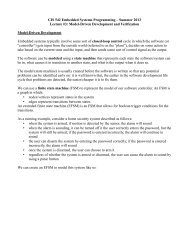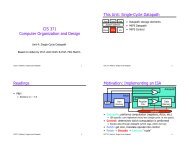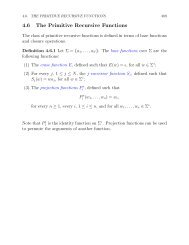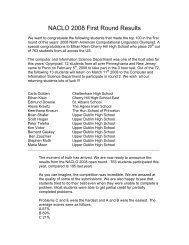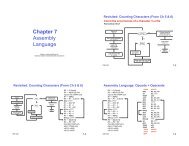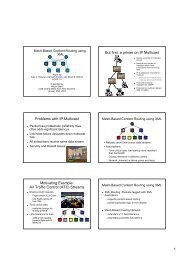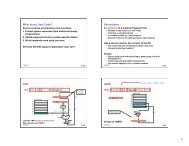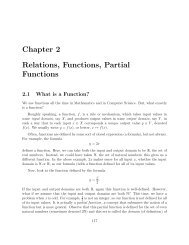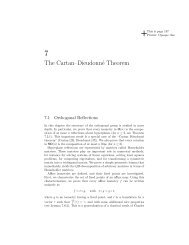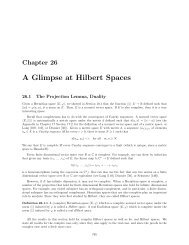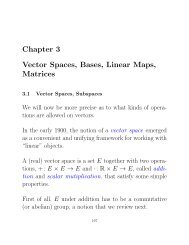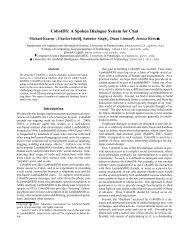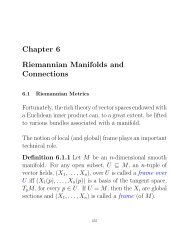Chapter 3 Context-Free Grammars, Context-Free Languages, Parse ...
Chapter 3 Context-Free Grammars, Context-Free Languages, Parse ...
Chapter 3 Context-Free Grammars, Context-Free Languages, Parse ...
Create successful ePaper yourself
Turn your PDF publications into a flip-book with our unique Google optimized e-Paper software.
36 CHAPTER 3. CONTEXT-FREE GRAMMARS AND LANGUAGES<br />
every derivation from E is of the form<br />
or<br />
where n ≥ 0.<br />
E ∗<br />
=⇒ a n Eb n =⇒ a n abb n = a n+1 b n+1 ,<br />
E ∗<br />
=⇒ a n Eb n =⇒ a n aEbb n = a n+1 Eb n+1 ,<br />
Grammar G1 is very simple: every string a n b n has a unique derivation. This is usually<br />
not the case. For example, using the grammar G2 =({E,+, ∗, (, ),a}, {+, ∗, (, ),a},P,E),<br />
where P is the set of rules<br />
E −→ E + E,<br />
E −→ E ∗ E,<br />
E −→ (E),<br />
E −→ a,<br />
the string a + a ∗ a has the following distinct derivations, where the boldface indicates which<br />
occurrence of E is rewritten:<br />
and<br />
E =⇒ E ∗ E =⇒ E + E ∗ E<br />
=⇒ a + E ∗ E =⇒ a + a ∗ E =⇒ a + a ∗ a,<br />
E =⇒ E + E =⇒ a + E<br />
=⇒ a + E ∗ E =⇒ a + a ∗ E =⇒ a + a ∗ a.<br />
In the above derivations, the leftmost occurrence of a nonterminal is chosen at each step.<br />
Such derivations are called leftmost derivations. We could systematically rewrite the rightmost<br />
occurrence of a nonterminal, getting rightmost derivations. The string a + a ∗ a also<br />
has the following two rightmost derivations, where the boldface indicates which occurrence<br />
of E is rewritten:<br />
and<br />
E =⇒ E + E =⇒ E + E ∗ E<br />
=⇒ E + E ∗ a =⇒ E + a ∗ a =⇒ a + a ∗ a,<br />
E =⇒ E ∗ E =⇒ E ∗ a<br />
=⇒ E + E ∗ a =⇒ E + a ∗ a =⇒ a + a ∗ a.<br />
The language generated by a context-free grammar is defined as follows.



